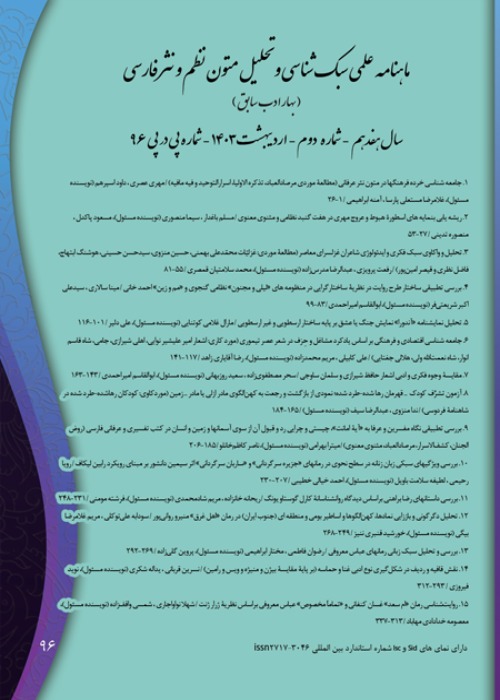Stylistic analysis of ritual poems of poets after the revolution
Style is the expression of a writer or poet. The term is currently used to refer to methods studying literature analytically through the use of linguistic techniques and concepts. It also determines the angle of view, linguistic issues, how to characterize and how to orient thetheme. Ritual poetry is a form of committed poetry that has a completely religious nature in terms of meaning and content and originates from the revelatory teachings, the culture of Etrat and Wilayah and the history of Islam. Religious ceremonies, praise of religious figures, attention to sacred and heavenly categories, and human self-cultivation and self-purification are at the core of religious poetry.Since stylistics is a tool for recognizing the poet"s human, scientific, literary and ideological identity, this paper uses a descriptive-analytical procedure to investigate obvious stylistic features of Post-Revolutionary Poets such as Kaiser Aminpour,SamanHarati, Ali MoallemDamghani,Ali MousaviGarmaroodi, Seyed Hassan Hosseini and Alireza Qazveh.
This paper has been written based on library studies in a descriptive-analytical manner.
Paying attention to internal music, giving prominence to ideas and concepts, using the marked vocabularies, fluency and simplicity, eloquent elements artistically, making pictures of imagination and emotion, paying attention to addressee-centered and meanings, emphasizing on religious, revolutionary, humane and ideal concepts are among the stylistic features ofRevolutionary Poets.
The results show that these poetshave used all the possibilities of poetry to explain their religious ideas and based on these ideas and the Alavi, Hosseini and Ashurathemes, they can be called conceptualist poets. A look at the literary and linguistic aspects of their poetry shows these poets know the literary and linguistic standards of the past and present and wherever they deem appropriate, they use them to increase their wordinfluence.
- حق عضویت دریافتی صرف حمایت از نشریات عضو و نگهداری، تکمیل و توسعه مگیران میشود.
- پرداخت حق اشتراک و دانلود مقالات اجازه بازنشر آن در سایر رسانههای چاپی و دیجیتال را به کاربر نمیدهد.



